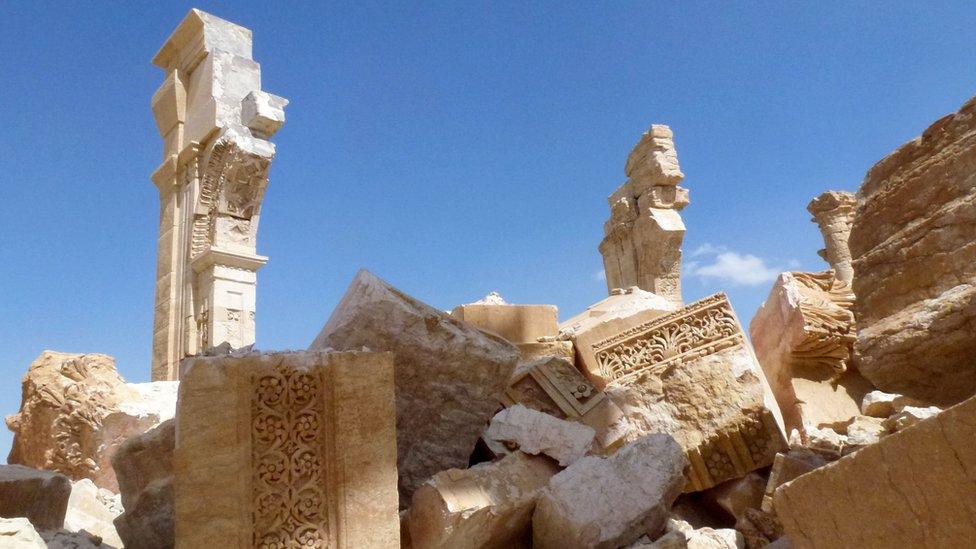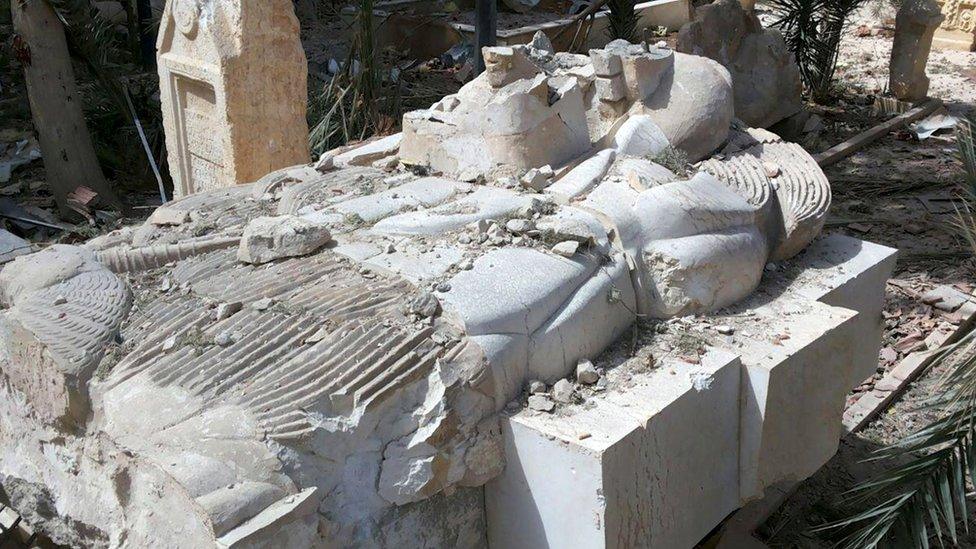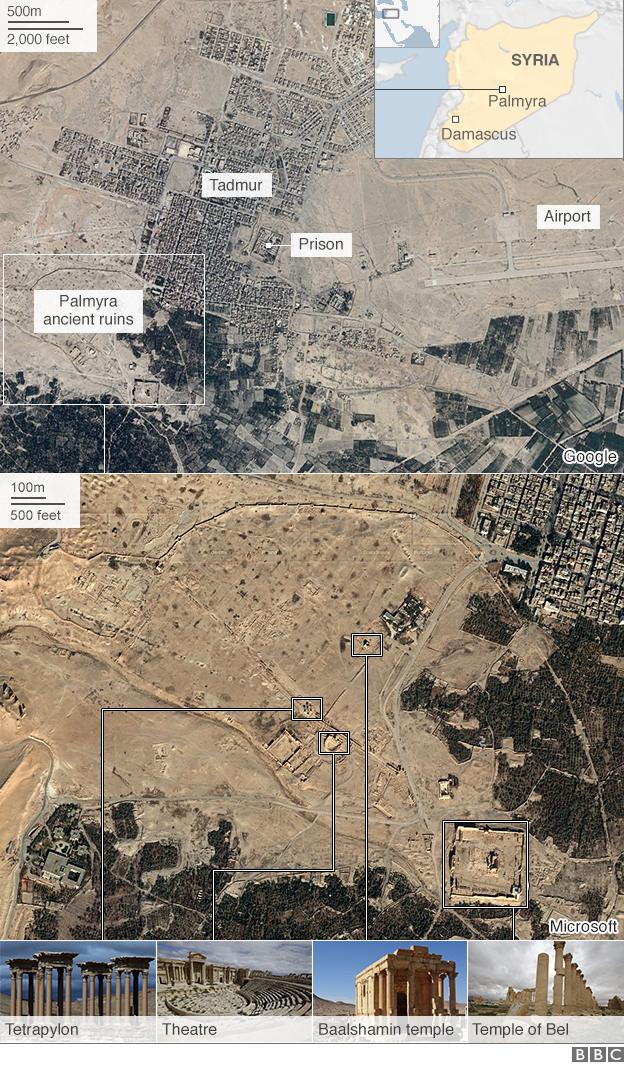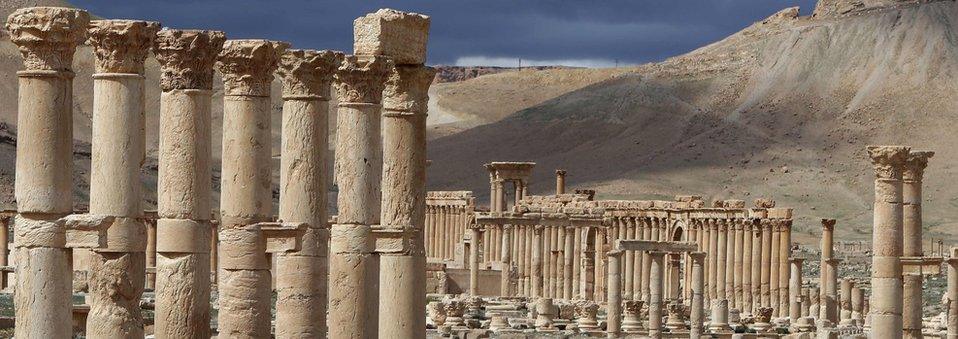Syria civil war: Assad hails Palmyra recapture from IS
- Published
Syrian state media report that Palmyra has been recaptured
President Bashar al-Assad has hailed the recapture of Palmyra from so-called Islamic State (IS) as an "important achievement" in the "war on terrorism".
A monitoring group has backed the Syrian government's claim that the city was recaptured overnight by the army.
Military sources say the Syrian army now has "full control" after days of fighting backed by Russian air strikes.
Meanwhile, Syria's antiquities chief said the damage to the ancient city was less than previously feared.
"We were expecting the worst. But the landscape, in general, is in good shape," Maamoun Abdulkarim told the AFP news agency.
He said he felt "indescribable joy" that the city had not been completely destroyed.
An on-the-ground assessment of the destruction will be carried out in coming days in order to develop restoration plans, Mr Abdulkarim said.
More images of the damage caused by IS have emerged since Palmyra's recapture.

The theatre in Palmyra, seen after Syrian troops recaptured the ancient city

The remains of the Arch of Triumph, a nearly 2000-year-old monument blown up by IS militants in October 2015

A damaged artefact at the entrance of Palmyra museum
President Assad said the recapture of Palmyra showed the success of the army's strategy.
Russian President Vladimir Putin congratulated Mr Assad, a Kremlin spokesman said.
The Kremlin said President Assad knew the Palmyra operation "would have been impossible without Russia's support".
Strategically important area
IS seized the Unesco World Heritage site and modern town in May 2015.
Palmyra is situated in a strategically important area on the road between the capital, Damascus, and the contested eastern city of Deir al-Zour.
The Syrian Observatory for Human Rights, a UK-based monitoring group, said at least 400 IS fighters were killed in the battle for Palmyra.
In a statement, external released on Saturday, Russia's defence ministry said its strikes hit 158 IS targets, killing more than 100 militants.

A victory for Assad - Lina Sinjab, BBC News, in neighbouring Lebanon
This is a victory for President Bashar al-Assad, who wants to show the world that he is a partner in fighting terrorism.
Backed by Russian war planes and Shia militias, government forces gained control over the ancient city and are now close to securing a vast area of the country.
But residents and observers cast doubts on why Mr Assad's forces pulled out from Palmyra in the first place, allowing Islamic State militants to get in to the city.
In May 2015, hundreds of IS fighters drove hundreds of kilometres across the desert to reach Palmyra, almost uninterrupted, while government forces were dropping barrel bombs over opposition areas full of civilians.
President Assad has now secured a stronger position in the peace talks. He is certainly seen as a problem-solver, but many say he is the source of the problem.


When IS seized the city it destroyed archaeological sites, drawing global outrage. Two 2,000-year-old temples, an arch and funerary towers were left in ruins.
The jihadist group, which has also demolished several pre-Islamic sites in neighbouring Iraq, believes that such structures are idolatrous.

Ancient city of Palmyra

Site contains monumental ruins of great city, once one of the most important cultural centres of the ancient world
Art and architecture, from the 1st and 2nd centuries, combine Greco-Roman techniques with local traditions and Persian influences
More than 1,000 columns, a Roman aqueduct and a formidable necropolis of more than 500 tombs made up the archaeological site
More than 150,000 tourists visited Palmyra every year before the Syrian conflict
